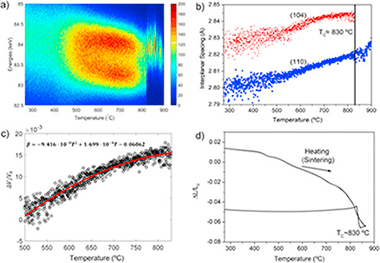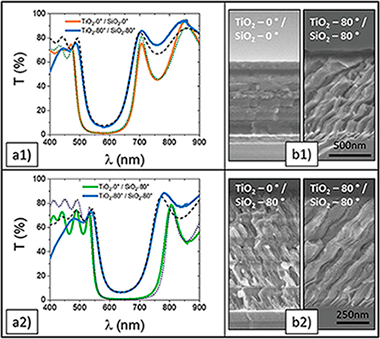Artículos SCI
2019
2019
Fotocatálisis Heterogénea: Aplicaciones
Catalytic Efficiency of Cu-Supported Pyrophyllite in Heterogeneous Catalytic Oxidation of Phenol
El Gaidoumi, A.; Doña-Rodríguez, J.M.; Pulido Melián, E.; González-Díaz, O.M.; Navío, J.A.; El Bali, B.; Kherbeche, A.Arabian Journal for Science and Engineering, (2019) 1-13
Show abstract ▽
The copper-impregnated pyrophyllite (Cu/RC) was prepared and used as catalyst in catalytic wet peroxide oxidation (CWPO) of phenol. The catalyst was prepared by impregnation of copper (2.5 wt%) into pyrophyllite-type clay and characterized by X-ray diffraction, X-ray fluorescence, X-ray photoelectron spectroscopy, Fourier transform infrared spectroscopy, and transmission electron microscopy. The optimum operation conditions for CWPO of phenol over Cu/RC were determined by investigating the effects of pH, temperature, catalyst amount, and hydrogen peroxide concentration. Stability of the Cu/RC catalyst and toxicity of treated solution were studied, by measuring the copper concentration leached out from the catalyst and the inhibition of Vibrio fischeri bacteria bioluminescence, respectively. The probable degradation mechanism of phenol over Cu/RC was considered by HPLC analysis. The obtained results showed that Cu/RC achieved highest activity (total phenol degradation and 80% TOC reduction) and detoxification with remarkable low copper leaching concentration (0.006 mg\,L−1)mg\,L−1) at optimized conditions (pH == 3, T=50∘T=50∘C, 2 g\,L−1g\,L−1 catalyst amount, 50 mg L−1L−1phenol concentration and 7.45 mmol\,L−1mmol\,L−1 hydrogen peroxide concentration during 4 h). Meanwhile, few intermediates with low concentration were observed by the HPLC analysis for the CWPO of phenol. The Cu/RC catalyst showed a good activity after five successive runs (88% of degradation and 73% mineralization) at optimized conditions.
Febrero, 2019 | DOI: 10.1007/s13369-019-03757-2
Química de Superficies y Catálisis
Immobilization of Stabilized Gold Nanoparticles on Various Ceria-Based Oxides: Influence of the Protecting Agent on the Glucose Oxidation Reaction
Chenouf, M; Megias-Sayago, C; Ammari, F; Ivanova, S; Centeno, MA; Odriozola, JACatalysts, 9 (2019) 125
Show abstract ▽
The influence of the protecting agent's nature on gold particle size and dispersion was studied in this work over a series of gold-based catalysts. CO and glucose oxidation were chosen as catalytic reactions to determine the catalyst's structure-activity relationship. The nature of the support appeared to be the predominant factor for the increase in activity, as the oxygen mobility was decisive for the CO oxidation in the same way that the Lewis acidity was decisive for the glucose oxidation. For the same catalyst composition, the use of montmorillonite as the stabilizing agent resulted in better catalytic performance.
Febrero, 2019 | DOI: 10.3390/catal9020125
Reactividad de Sólidos
Insight into the BiFeO3 flash sintering process by in-situ energy dispersive X-ray diffraction (ED-XRD)
Perez-Maqueda, LA; Gil-Gonzalez, E; Wassel, MA; Jha, SK; Perejon, A; Charalambous, H; Okasinski, J; Sanchez-Jimenez, PE; Tsakalakos, TCeramics International, 45 (2019) 2828-2834
Show abstract ▽

The sintering mechanism of BiFeO3 has been investigated in-situ by energy dispersive X-ray diffraction (ED-XRD) using a high-energy white collimated X-ray beam from the Advanced Photon Source (Argonne National Laboratories). Such radiation is very penetrating thereby allowing measurements of the sample even when placed inside the flash sintering set up. Additionally, the fast ED-XRD measurements permit monitoring the flash sintering process by providing information about phase composition and sample temperature in real time. Moreover, profile scans, obtained by moving the stage vertically while recording the ED-XRD spectra, permit investigating the homogeneity of the flash for the entire length of the sample. All experiments have been complemented by ex-situ studies. It has been concluded that flash sintering of BiFeO3 is a homogeneous process without any directionality effects. Furthermore, flash sintering takes place at quite low temperatures (below the Tc ≈ 830 °C), which may be related to the high quality of the samples, as pure, highly insulating ceramics without evidence of secondary phases with a homogenous nanostructured grain size distribution are obtained by this technique. Moreover, it is also evidenced that the rapid heating of the sample does not seem to justify, at least by itself, the densification process. Therefore, it appears that the electric current should play a role in the enhanced mobility during the sintering process.
Febrero, 2019 | DOI: 10.1016/j.ceramint.2018.07.293
Nanotecnología en Superficies y Plasma
Environmentally Tight TiO2-SiO2 Porous 1D-Photonic Structures
Garcia-Valenzuela, A; Lopez-Santos, C; Rico, V; Alvarez, R; Palmero, A; Gonzalez-Elipe, ARAdvanced Materials Interfaces, 6 (2019) art. 1801212
Show abstract ▽

Although thin film porosity is the basis of many optical sensors, it can be deleterious for a stable optical behavior of passive optical elements due to the condensation of water and other vapors in their pores. This paper proposes a new strategy for the magnetron sputtering (MS) fabrication of environmentally tight SiO2-TiO2 porous multilayers. Thin films of these two oxides deposited in an oblique angle configuration (MS-OAD) present a nanocolumnar and highly porous nanostructure and, as a consequence, experience significant changes in their optical properties when exposed to water vapor. Similarly, the optical properties of Bragg reflectors and Bragg microcavities made of the stacking of porous and compact SiO2 and TiO2 thin films experience reversible changes when these 1D-photonic structures are exposed to water pressure. A key finding of this work is that a very thin capping layer of SiO2 deposited on the surface of porous SiO2 films in the stack, at the interlayer between the two oxides, efficiently seals the pores making the photonic structures environmentally tight. This capping layer approach is a useful strategy to incorporate porosity as an additional parameter to design the optical behavior of planar photonic structures while preserving optical and environmental stability.
Febrero, 2019 | DOI: 10.1002/admi.201801212
Amber, beads and social interaction in the Late Prehistory of the Iberian Peninsula: an update
Odriozola, CP; Sousa, AC; Mataloto, R; Boaventura, R; Andrade, M; Garcia, RV; Garrido-Cordero, JA; Rodriguez, E; Martinez-Blanes, JM; Aviles, MA; Daura, J; Sanz, M; Riquelme, JAArchaeological and Anthropological Sciences, 11 (2019) 567-595
Show abstract ▽
The identification of archaeological amber has been used in Iberian prehistory to evidence long-distance exchanges and engage Iberia in networks that connect western Europe with central and northern Europe, the emergence of social complexity, and the consolidation of trade networks. However, until now, no comprehensive analytical study of the Iberian amber has been produced to support any of the interpretive models currently in use. This paper approaches the analysis of Iberian Peninsula amber artefacts by considering their provenance (based on FTIR characterization), chronology, and spatial relationship with other exotica. Our work increases the number of analyzed artefacts to 156 (24%), out of the c. 647 currently known for the Iberian Peninsula. Based on these new data and a review of Murillo-Barroso and Martinon-Torres (2012), this overview outlines amber consumption patterns from the 6th to 2nd millennia BCE and demonstrates long-distance amber exchange connecting Iberia with the Mediterranean region from the Neolithic period onwards.
Febrero, 2019 | DOI: 10.1007/s12520-017-0549-7
- ‹ anterior
- 142 of 420
- siguiente ›














